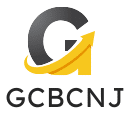What Are the Best Practices for Small Businesses to Manage Cash Flow Effectively?

You’re running a small business, and one of the most critical aspects you need to handle is cash flow management. It’s not merely about getting enough sales or customers; it’s about ensuring there is a steady stream of cash coming in and out of your business.
So, what exactly are cash flow and why are they so crucial for small businesses? More importantly, how can you manage it effectively to ensure your business’ financial health?
A lire également : What Are the Effective Ways for Small Businesses to Build and Engage with Their Email List?
Understanding Cash Flow and Its Importance
Cash flow is the movement of money into and out of your business. It’s the lifeblood of any small business, providing the necessary funds for operations, expenses, and investments. The inflows come from customers who purchase your products or services while the outflows go towards expenses such as rent, salaries, inventory, and equipment.
Managing cash flow effectively is vital. Cash shortfalls can lead to business failure, even if your company is profitable on paper. Your ability to pay suppliers on time, meet payroll, maintain inventory, and invest in growth largely depends on your ability to manage your cash flow.
Lire également : How to Create a Compelling and User-Friendly E-commerce Experience for Small Businesses?
Best Practices for Managing Cash Flow
Now that you understand the significance of cash flow, how can you manage it effectively? Here are some best practices that will help ensure the financial health of your small businesses.
Implement Effective Payment Terms
One straightforward way of managing your cash flow is by implementing effective payment terms. These are the conditions you set with your customers about when payments are due.
By setting short payment terms, like net-15 or net-30, you can accelerate cash inflows and minimize the time it takes for your business to get paid. Also, consider offering discounts to customers who pay their invoices early. This practice encourages timely payments, thus speeding up your cash inflows.
Use Credit Wisely
Another best practice is using credit wisely. While it might be tempting to use credit to finance your operations, it can lead to cash flow problems if not managed properly.
Instead, use credit strategically for significant purchases that will generate revenue over time, like new equipment or inventory. Be sure to compare different credit terms and choose the one that offers the best terms for your business. Remember, a lower interest rate means less money out of your pocket in the long run.
Track and Forecast Cash Flow
Tracking and forecasting your cash flow is another critical practice. This involves keeping a close eye on your cash inflows and outflows and predicting future cash flow based on past trends and upcoming expenses.
There are various tools available that can help you with this, from simple spreadsheets to sophisticated cash flow management software. Whichever tool you choose, the key is to update it regularly to reflect your business’s current financial situation.
Optimize Your Expenses
Expenses are inevitable in running a business. However, there are ways to optimize them to improve cash flow.
First, evaluate your current expenses and identify any areas where you could potentially save money. This could be anything from negotiating better terms with suppliers, reducing energy consumption, or even changing your business processes to be more efficient.
Second, consider delaying non-essential expenses or making smaller, more frequent payments instead of large lump sums. This can help keep more cash on hand and make your cash flow more predictable.
Maintain a Cash Reserve
Last but not least, it’s crucial to maintain a cash reserve. This is a buffer of cash set aside to cover unexpected expenses or to tide your business over during slow periods.
While it might be tempting to use this cash for other purposes, resist the urge. This reserve is your safety net, providing critical financial support when you need it most.
In conclusion, managing cash flow effectively is a delicate balancing act. It requires careful planning, ongoing monitoring, and a proactive approach to financial management. But by implementing these best practices, you can ensure your small business stays financially healthy and profitable.
Enhancing Receivables for Improved Cash Flow
A crucial aspect of managing cash flow in small businesses is enhancing receivables. This technique focuses on managing accounts receivable effectively to speed up cash inflows and reduce the lag time between making a sale and receiving payment.
Firstly, ensure your billing process is efficient and timely. The faster you send an invoice, the quicker you get paid. Utilize technology to streamline your invoicing process. Automated invoicing can save time, reduce errors, and ensure that bills are sent on time.
Next, stay on top of your receivables. Regularly monitor your accounts receivable to identify slow-paying customers. Reach out to customers who have overdue accounts, offer payment plans, or employ a collection agency if necessary.
Finally, revisit your credit policy. If you extend credit to your customers, make sure you have a robust credit approval process in place. This can prevent sales to customers who are unlikely to pay on time.
Remember, enhancing receivables is an effective way to improve cash flow for your small business. By speeding up cash inflows, you can ensure there is always enough working capital to cover your business’s short-term needs.
Utilizing Cash Flow Management Tools
In today’s digital world, several tools can help small businesses manage cash flow effectively. These range from simple accounting software to more sophisticated cash flow management systems.
For instance, cloud-based accounting software can help you track revenue and expenses in real-time, giving you an accurate picture of your business’s cash position at any point in time. These tools can also alert you to potential cash flow problems, allowing you to take action before they become serious.
Cash flow forecasting tools, on the other hand, can help you anticipate future cash flows based on past trends and projected sales. This can be particularly useful for seasonal businesses, which may experience significant fluctuations in cash flow throughout the year.
Lastly, there are tools that can help you manage your accounts receivable and payables. These tools can remind you when invoices are due, alert you to overdue accounts, and even automate the collection process.
In summary, using cash flow management tools can simplify the process of managing cash and help ensure a healthy cash flow for your small business. With these tools, you can keep a close eye on your cash flows, anticipate future cash needs, and take proactive steps to prevent cash flow problems.
Conclusion
In conclusion, managing cash flow effectively is not just about monitoring the cash coming in and out of your business. It’s about taking proactive steps to speed up cash inflows, slow down cash outflows, and ensure there is always enough cash on hand to meet your business’s needs.
Whether you’re a new small business owner or a seasoned entrepreneur, cash flow management should be a top priority. By implementing effective payment terms, using credit wisely, tracking and forecasting cash flow, optimizing expenses, enhancing receivables, and utilizing cash flow management tools, you can improve your cash flow and ensure the long-term success of your business.
So, start today. Take control of your business cash flow. Remember, a healthy cash flow is the backbone of a successful business.
